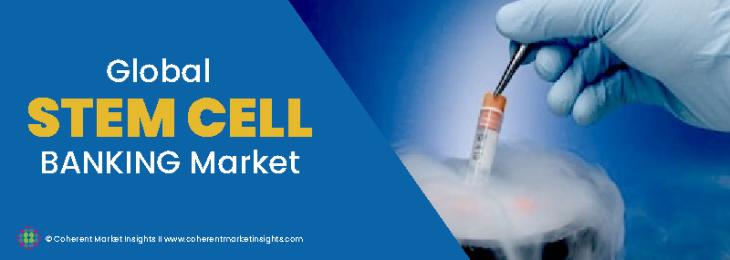
Stem cells have the capacity to develop into any type of body tissue or organ. In addition to bone marrow, stem cells are also present in foetal tissues, baby teeth, fat, human embryos, hair follicles, muscle, and blood. Cord blood, however, is a reliable source of stem cells. Due to a number of benefits, such as their effectiveness in transplants due to lower risks of immune rejection during the transfusion, stem cells from cord blood are preferred. The demand for stem cell banking is rising as a result of the many ways that stem cells are being used, such as in the treatment of cancer and other diseases. These stem cells are taken from people and stored for potential use.
The market for Stem Cell Banking is anticipated to reach US$ 4,483.31 million in 2022 and grow at a CAGR of 18.9% over the following five years (2022-2030).
Leading Companies in the Stem Cell Banking Industry:
1. Stem Cyte, Inc.
The US Department of Health and Human Services has contracted with StemCyte, one of the few for-profit companies, to help with the public supply of clinical grade cord blood units to the National Cord Blood Inventory for unrelated transplants. The company's main office is in Baldwin Park, California.
jCyte and the Center for Breakthrough Medicines (CBM) have announced a strategic partnership to produce jCyte's novel cell therapy for the treatment of retinal degenerative diseases.
2. CRYO-CELL INTERNATIONAL, INC.
A cord blood bank is Cryo-Cell International, Inc. Dan Richard started it in 1989. The first private cord blood bank to separate and store stem cells is Cryo-Cell International. In Oldsmar, Florida, which is outside of Tampa, Cryo-Cell has its headquarters.
Cryo-cell, a leader in cord blood banking, reports financial results for the third quarter of 2022.
3. ViaCord
In order to provide expectant parents with a secure and comfortable environment in which to store their children's cord blood, ViaCord was founded in 1993. ViaCord conducted extensive research and validation studies before launching our cord blood banking service in order to establish high standards for the collection, processing, and storage of cord blood.
250th cord blood stem cell unit released by ViaCord.
4. Cord Blood Registry
The largest and most seasoned newborn stem cell company in the world is Cord Blood Registry. More than 1 million cord blood and cord tissue samples have been given to CBR by families since 1992.
5. SmartCells, Inc.
Insulin products are designed and developed by SmartCells, Inc. The business provides a self-regulating injectable formulation for the treatment of diabetes as well as polymer-based dosing technology for a variety of uses, including the treatment of thyroid, growth hormone, and fertility issues. Beverly, Massachusetts is where SmartCells has its headquarters.
6. LifeCell International Pvt. Ltd.
LifeCell was founded in 2004 and initially focused on the banking of umbilical cord stem cells. Since then, the company has expanded to offer a full range of stem cell solutions, including multi-service stem cell banking, R&D, stem cell clinical trials, and stem cell therapy. With its headquarters in Chennai, LifeCell has 200 service centres spread across India and the GCC nations.
7. Cryoviva Biotech Pvt. Ltd.
RJ Corp established Cryoviva Biotech Private Limited in 2006. The business specialises in processing and storing high-quality umbilical cord blood stem cells for both private and public donation uses. Based in Gurgaon and offering high-end processing and storage technology that has received approval from international authorities. Networks in all Indian towns.
8. Cryo Stemcell
The first private cord blood bank in the world was established in 1989 by Cryo-Cell International Inc. Due to its cutting-edge processing techniques that capture the most viable cell types and adherence to the highest accreditation standards in cryopreservation procedures, Cryo-Cell is widely acknowledged as the industry leader and produces the best cord blood and tissue stem cell collections for our families.
*Definition: Stem cell banking is the process of gathering, processing, and storing stem cells that have the potential to save lives for use in treatments and regenerative medicine in the future.





